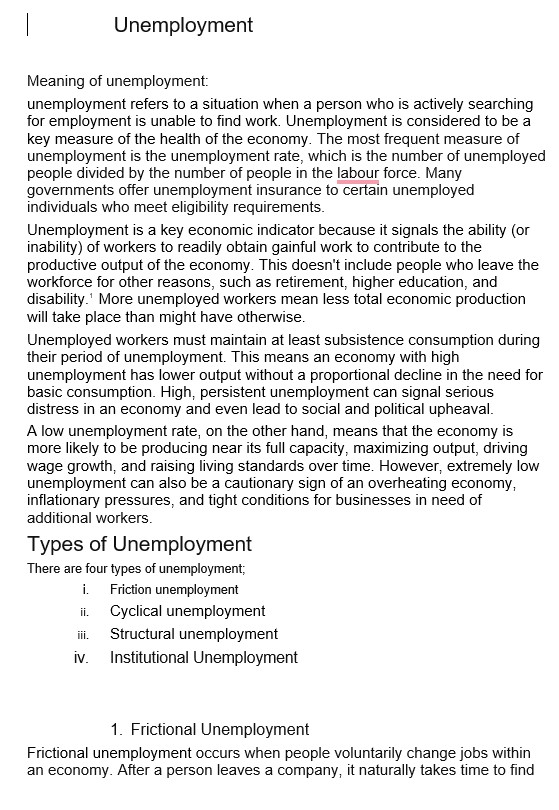The Effects of Unemployment
Summary:
Unemployment is the state of actively searching for employment but unable to find work. It is a crucial indicator of an economy’s health. The unemployment rate, calculated by dividing the number of unemployed individuals by the total labour force, is commonly used. Governments often provide unemployment insurance to eligible individuals. High unemployment indicates a lower level of economic output and can lead to social and political unrest. Conversely, low unemployment suggests a thriving economy near its full capacity. There are four types of unemployment: frictional, cyclical, structural, and institutional. Frictional unemployment occurs when people change jobs voluntarily, while cyclical unemployment fluctuates with economic cycles. Structural unemployment arises from technological changes, and government policies and labour market factors influence institutional unemployment. Unemployment can be measured using surveys, census counts, and unemployment insurance claims. It has individual and national effects, impacting personal finances, family relationships, consumer spending, and business profits. Long-term unemployment, lasting more than 27 weeks, has more severe consequences, including financial hardships, strained relationships, hindered career goals, and reduced self-esteem.
Excerpt:
The Effects of Unemployment
Meaning of unemployment:
unemployment refers to a situation when a person who is actively searching for employment is unable to find work. Unemployment is considered to be a key measure of the health of the economy. The most frequent measure of unemployment is the unemployment rate, which is the number of unemployed people divided by the number of people in the labour force. Many governments offer unemployment insurance to certain unemployed
individuals who meet eligibility requirements.
Unemployment is a key economic indicator because it signals the ability (or inability) of workers to readily obtain gainful work to contribute to the productive output of the economy. This doesn’t include people who leave the
workforce for other reasons, such as retirement, higher education, and disability.1 More unemployed workers mean less total economic production will take place than might have otherwise.
Unemployed workers must maintain at least subsistence consumption during their period of unemployment. This means an economy with high unemployment has lower output without a proportional decline in the need for basic consumption. High, persistent unemployment can signal serious distress in an economy and even lead to social and political upheaval.


Reviews